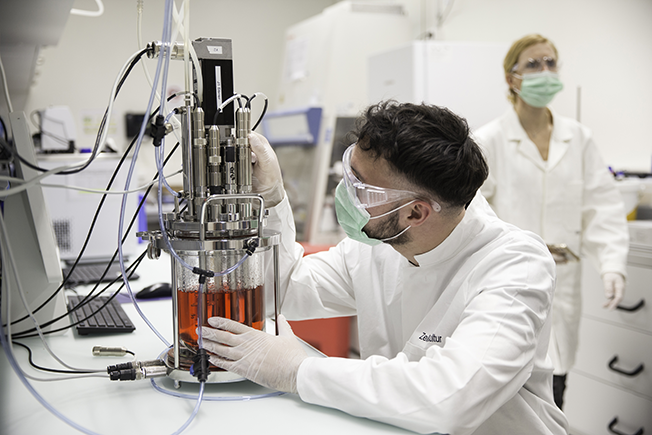

Protect then serve
Coming up with the idea was hard enough but protecting it is paramount. Kerry Rees & Dr Jennifer Bailey provide some best-practice advice around intellectual property in the alternative proteins space
Intellectual property is a vital part of a business plan for any technology-based company. In alternative proteins, it is especially important to understand how IP can be used to support growth and attract investment. Here, we highlight some key considerations.
Is the IP strategy aligned to the business plan?
Potential investors will want to be reassured their investments are safe and that you will grow to exit. As such, they will conduct due diligence to determine what IP you hold, its validity and, importantly, how this IP will help the company to grow.
An obvious first step in developing an IP strategy is to compile an IP register of existing IP rights, which is regularly updated. This is a good exercise as it may highlight existing patents or patent applications that do not adequately cover the actual product or process that is being commercialized, will not keep out competitors and thus has limited value. It is therefore critical the company’s existing IP is reviewed to determine whether it maps onto the products and/or processes that will generate income for the company.

If there are holes in a company’s existing IP, consideration should be given as to whether the hole can be filled by filing new patent applications. This means being selective about what is protected now, and then developing a strategy for protecting developments as the technology progresses. This is vital for start-ups where funds are not limitless – an effective patent strategy will need to be focused so funds are not wasted on unnecessary IP rights.
What IP can we get?
Investors may be reassured if there is evidence of an awareness of IP both at the researcher and board level within the company such that systems are in place to capture technical developments and reviewed, primarily for their relevance to the aims of the business plan, and then whether IP surrounding the development ought to be protected. Patents are particularly relevant to alt-protein companies that seek to protect new and non-obvious innovations such as alternative food compositions, processes for making replica meats, fermentation processes, and constructs and host cells for culturing recombinant proteins.
An invention need not be groundbreaking to be patentable. There are two main requirements. First, it must be novel, although even a small difference relative to what’s been done before is sufficient; and secondly, it must involve an ‘inventive step’.
This is a rather subjective requirement and is assessed differently by different patent offices. A helpful way of thinking of it is, does the novel feature of the invention provide an unexpected benefit? (see Inventiveness sidebar).

Where and when to file?
Companies should carefully consider where IP rights will be most beneficial. Registered IP, in particular patents, is costly to obtain, so it might not be realistic to secure protection in a large number of countries. The location of your manufacturing, sales, customers and competitors will help determine the most suitable filing strategy.
When to file is perhaps the most difficult question to answer in the alt-protein space. If you file too early before you have generated sufficient data to support your application, then a patent may be refused. This could even invalidate later attempts to protect the invention once the data is available. On the flipside, if you file too late, your competitors may beat you to it, or you may miss out on critical funding by failing to convince investors that your company’s technology is protected.
Exactly when to file a patent application must be assessed on a case-by-case basis. An important consideration is to discuss the invention with your attorney before any disclosures are made so that they can advise you on the next steps.
How long and how much?
The complexity and cost of the patent application process can be a surprise to those who are not already familiar with IP. The initial filing to being awarded a granted patent can take upwards of four or five years, and cost in the tens of thousands of dollars. Having to overcome multiple objections from the patent office and amend your patent application to meet the stringent legal requirements – which differ from country to country – can frustrate patent applicants.
There are strategies for mitigating against protracted difficulties in trying to get your patent granted, such as carrying out prior art searching before filing, avoiding a scatter-gun approach to filings or trying to obtain an overly ambitious scope of protection, checking that the most important commercial variants of the invention are well-covered in the application, and generating sufficient data to support the application.
Setting out a strategy for filings early on, ensuring that this strategy is aligned with your business plan and putting aside a reasonable IP budget will help investors see that you take IP seriously and understand the potential gains and pitfalls.
Patents are particularly relevant to alt-protein companies that seek to protect new and non-obvious technical innovations
The risks to be aware of
Having your own IP does not always mean you can make, use or sell your product or service freely. Even if your product is patented, it may fall within the scope of a broader patent owned by a third party. Making or selling your product in a country where the third-party patent is in force would then infringe the third party’s rights, risking costly litigation. So, what steps can you take to minimize this risk?
Firstly, freedom-to-operate (FTO) searching can identify third-party rights that may prevent you from freely carrying out your commercial activities. If it turns out someone else’s patent might stand in your way, there are various options you can consider, such as negotiating a license with the patent owner or challenging the validity of the problem patent.
You can almost never be certain there is no risk of infringement – no matter how extensive the searching is – but an FTO review should at least catch the most significant risks.
Remember, though, risks don’t always come in the form of outside parties. Internal risks – from unplanned invention disclosures to breaches of confidentiality – can pose just as much of a threat. These risks can be mitigated in a number of ways. You should put effective processes and documents in place for dealing with IP, and providing training so staff understand how to recognize IP and its importance to the company’s success.
You should also have suitable employment contracts, policies, assignments, research agreements and NDAs to ensure new inventions are not only kept confidential but also that ownership of new IP resides in the company.

It is also advised that you should develop a process to capture potentially patentable inventions so decisions can be taken and actioned, such as whether a patent application should be filed, or whether an idea should be treated as a trade secret. Once the invention is disclosed, the chances of obtaining protection (in most countries) are lost, so prompt action is important.
And finally, a regular review of existing and future IP should be carried out to check that your strategy is consistent with the commercial goals of the company, as the business plan evolves over time.
How will our IP be exploited to benefit the company?
A benefit of having an IP right is the establishment of a monopoly for a particular product or process that provides a commercial advantage over your competitors. However, it is sometimes necessary to enforce your IP if it is infringed. Is there a budget and a plan for dealing with potential infringers in the business plan?
It is also possible to sell the IP, or license it to another party. In addition, it may be possible to license just a portion of the IP right. For example, you may own a patent for a culture process that covers bacterial, fungal and plant cells, but you only intend to commercialize a process using plant cells. Here, it may be possible to license the process for use with bacterial and fungal cells to third parties, thereby generating income from a portion of the patented technology that you are not using. How the broader technology might be used (by you or others) in the future – and how the related IP could be exploited – may therefore inform your filing strategy, and so is worth keeping in mind when preparing your IP strategy.
For more advice about intellectual property in the alternative proteins sphere, please click here
If you have any questions or would like to get in touch with us, please email info@futureofproteinproduction.com


%20ILVO%202.jpg)

.png)

